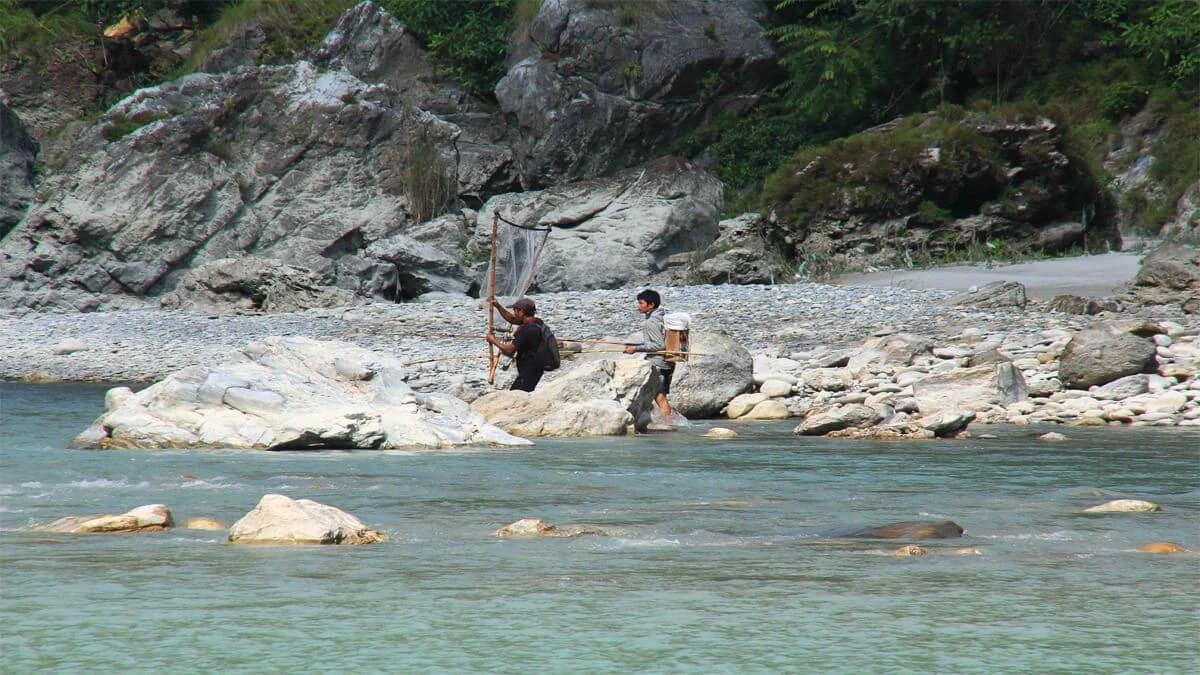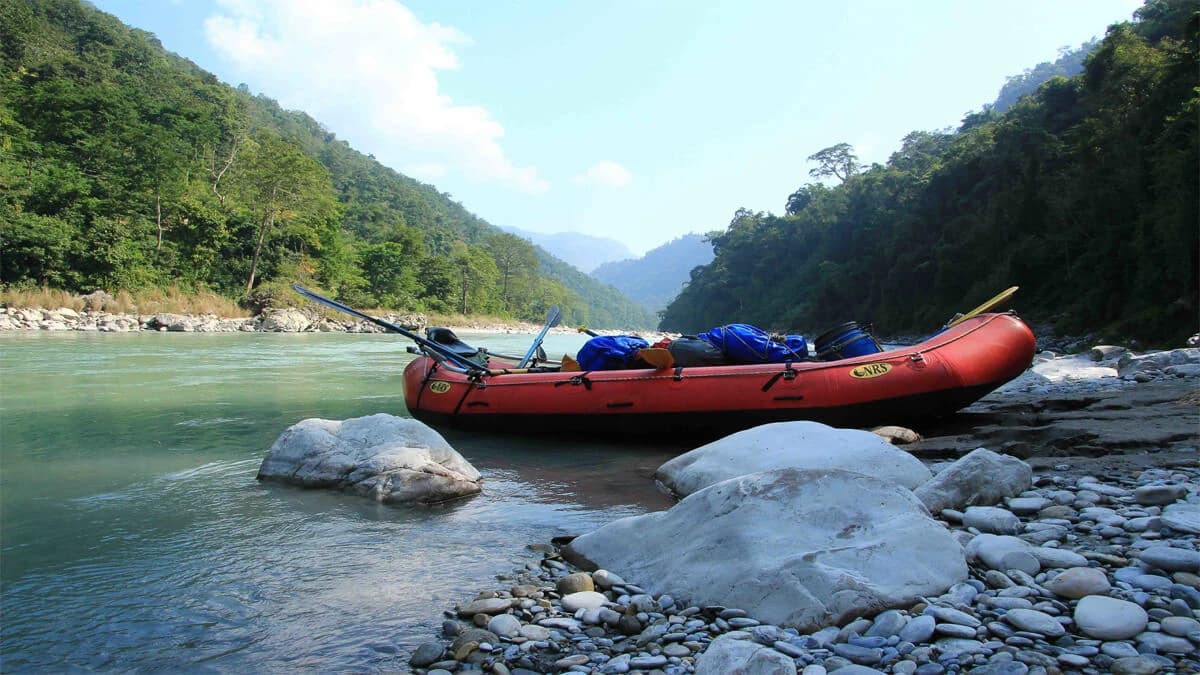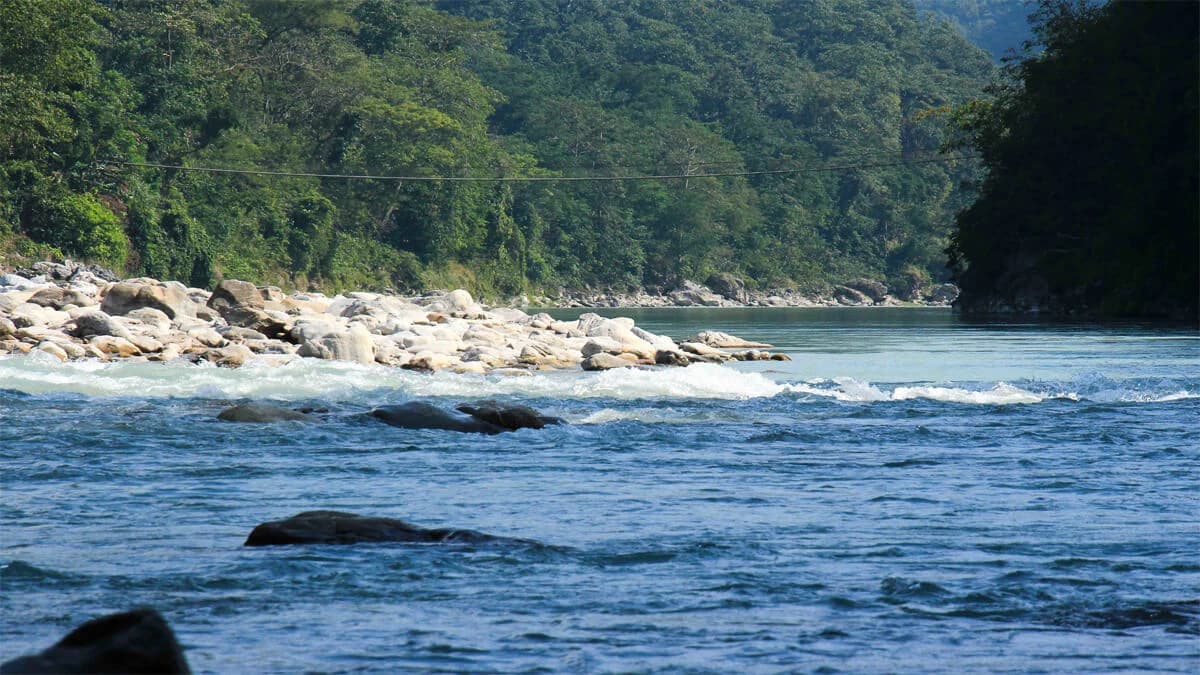This beautiful Himalayan river passes through stunning jungle scenery, green hills and valleys. The warm and beautiful Seti river can be consider as an excellent river for bird-watchers and those interested in the abundance of nature found on this trip.
The gentle river follow from the Himalayan peaks having plenty lots of small and straightforward rapids. During the monsoon the intensity of the rapids increases and attracts a radically different set of rafters.
Seti river can offer an ideal trip for those wanting to experience their first time river trip with the stunning river scenery in Nepal and without the intensity of complex or challenging rapids. It is also very well recommended to family trips and best river to learn kayaking in Nepal.
Accessibility and Location
The put in point of the Seti River is Madi River Bridge at Damauli and after 2-day river rafting action take out at Gaighat bellow the Trishuli River confluence. Transferring at Damauli is accessible form Pokhara (appr.2 hr.) and from Kathmandu (appr.4:30 hr.) by drive. After end the trip, you can continue your journey to Pokhara (appr. 4-5 hr.) or Chitwan National Park (appr.1hr.) or drive to Kathmandu (appr.5 hr.).
Mountain River Rafting arranges also private transportation or Tourist bus to the put-in point and from the take out point at the end of trip it may depends on requirement of clients.
River Description
The family classic wildness warm water river "Seti" passes through the lime stone gorge of beautiful Pokhara valley. It has unspoilt greenish jungle scenery, excellent bird watching site, local cultural heritage and beautiful clean beaches, many small and undemanding rapids. In the monsoon season, water volume level rises up so the strength of the rapids increases and attracts rafters to challenge with its real adrenaline.
The Seti River is an ideal rafting destination for those who are looking to experience some of the spectacular riverine forest scenery in mid-west of Nepal without rushing of big challenging rapids. It is also very famous for family rafting trips and one of the best spot to learn kayaking in Nepal.
Season/Months
Difficulties/Grade
Water volume
September - December
iv
Approx. 300 cumecs
January - May
iv-
Approx. 200 cumecs
June - August
Iv+
Approx. 450 cumecs
Trip Preparation and pre-departure meeting
Before heading every outdoor trip we would like to request to our guests to be gathered at our office for pre-departure meeting as it is also prime concern to introduce with our team-Trip Leader, Guides, trip staffs and other guests, complete final official formalities, discuss about the trip system, timetable and other important matters to make your happy journey successful.
Equipments and services we provide for the trip
Best quality self-bailing inflatable raft, Whitewater safety helmet, modern plastic paddle, neoprene-wetsuit, PFD-lifejacket, Dry top Jacket, Waterproof Container/Barrel for camera and valuables things, Dry bag, First-Aid Kits and Tents/mass fly sheet and sleeping mat, other necessary camping gear cooking utensils, hygienically prepared food and drinks.
Things you need to bring for the trip
River wear gear: shorts- half pant, T-shirts (long sleep for sun protection), swim wear, Sun Cap/Glass/Cream, personal water bottle, a pair of river sandals.
For the camp site wear: Personal sleeping bag, lightweight shirts, Trouser/pant, under garments socks, a towel, light shoe, Fleece type pullover, flash light, personal toiletries, camera, reading and writing materials, medication recommended by your doctor.
Safety Issue
Mountain River Rafting team takes safety issues very seriously for every rafting trip and believe every happy outdoor trip is a safe one. Our team members have updated training courses - AR/CPR, Wildness First-Aid and Whitewater Rescue Technician conducted by Rescue 3 International. Besides in every trip also provides expert safety kayaker for rescue and make your rafting journey with us more comfort and enjoyable.
Care of Environment
The care of environment is our prime concern responsibility to protect the wildness resources of Nepal for future generation. We practice and follow minimum impact polices on our every outdoor journey- by using gas or kerosene as a cooking fuel instead of local firewood. Moreover by disposing and cleaning both biodegradable and non-degradable properly from the campsite.



